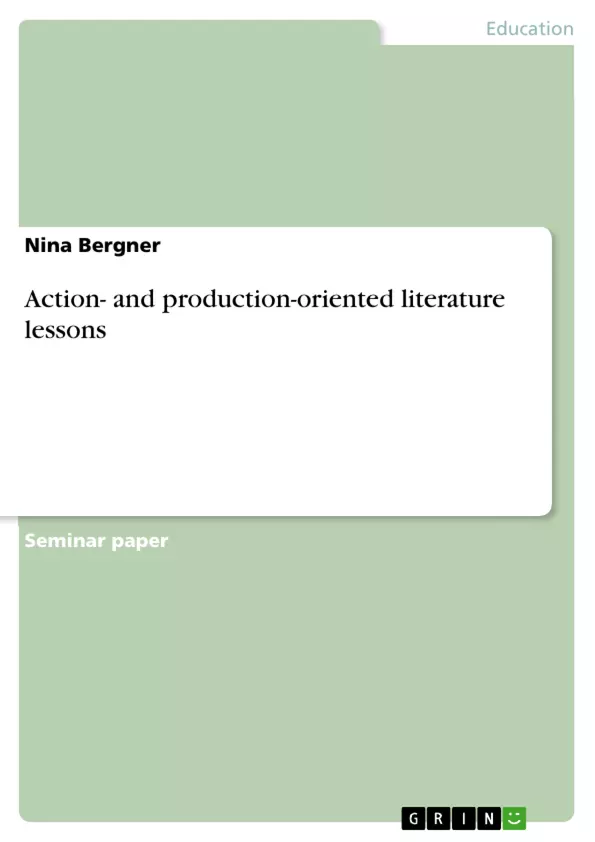In writing didactics, the action and production-oriented approach has a central position today. The beginnings of the teaching concept lie in the 1970s, although there were already tendencies towards this type of writing lessons before that. In the 1990s, action and production orientation found its way into curricula; writing on texts is now an integral part of German lessons.
In the following, after a clarification of terms, the most important basic principles of action- and production-oriented literature lessons are to be shown and on the basis of which the necessity of action- and production-oriented German lessons is to be justified. The historical development is then shown and finally some of the action- and production-oriented methods for teaching are presented. The conclusion of the work should be a specially devised project to show how forms of action and production orientation can be realized in the classroom. Schiller's drama Maria Stuart was chosen for this purpose.
Table of Contents
- Introduction
- What is action- and production-oriented literature teaching?
- Definitional approach
- Forerunner of action- and production-oriented teaching - history
- The influence of reception aesthetics
- Deconstructivism and Constructivism
- Basic principles and legitimacy
- Intensification of learning processes through self-activity and discovering learning
- Promotion of motivation
- Promoting imagination
- Understanding others and taking on perspectives
- Individual reference standard orientation
- Participation of all students
- Combination of different teaching objectives
- Forms of productive handling of texts
- lyrics
- Epic lyrics
- drama - specially conceived example for the treatment of Mary Stuart
- Evaluation of productive tasks
- Final thought
Objectives and Key Themes
The objective of this work is to provide a comprehensive understanding of action- and production-oriented literature teaching, exploring its definition, historical development, key principles, and practical implementation in the classroom. This approach emphasizes active student participation and the creation of their own literary works.
- Defining and explaining the concept of action- and production-oriented literature teaching
- Exploring the historical development of this teaching approach
- Identifying the core principles and benefits of action- and production-oriented literature teaching
- Presenting practical examples of productive text handling in different literary genres
- Examining the evaluation of productive tasks in literature lessons
Chapter Summaries
- The introduction establishes the relevance of action- and production-oriented literature teaching within contemporary writing didactics. It highlights the historical roots of this approach and outlines the structure of the paper.
- This chapter delves into the definition of action- and production-oriented literature teaching, emphasizing the active role of students in engaging with literary texts through creative processes such as rewriting, supplementing, and adapting. It contrasts this approach with traditional, purely receptive learning.
- The historical development of action- and production-oriented teaching is traced back to the 18th century, highlighting key figures like Lessing who advocated for student-generated texts and emphasized the creative potential of learners. The influence of reform pedagogy in the 20th century and the contribution of Robert Ulshöfer's methodology are also discussed.
- This chapter explores various forms of productive text handling within action- and production-oriented literature teaching, focusing on the creation of original works in different literary genres such as lyrics, epic lyrics, and drama.
Keywords
Action- and production-oriented literature teaching, writing didactics, reception aesthetics, deconstructivism, constructivism, self-activity, creative writing, text handling, literary genres, drama, evaluation of productive tasks, classroom implementation.
- Quote paper
- Nina Bergner (Author), 2003, Action- and production-oriented literature lessons, Munich, GRIN Verlag, https://www.grin.com/document/1174195



